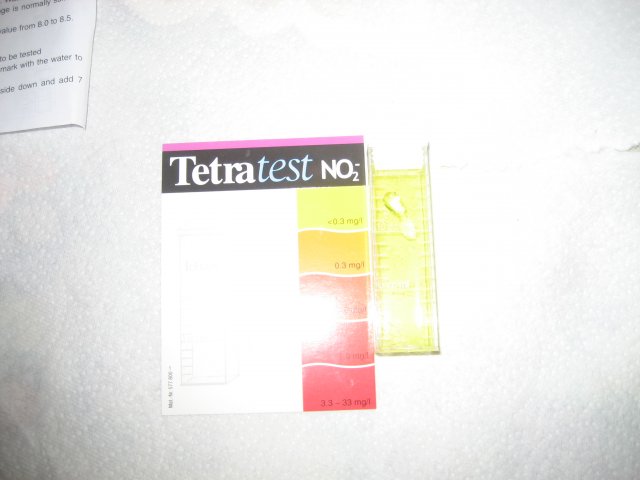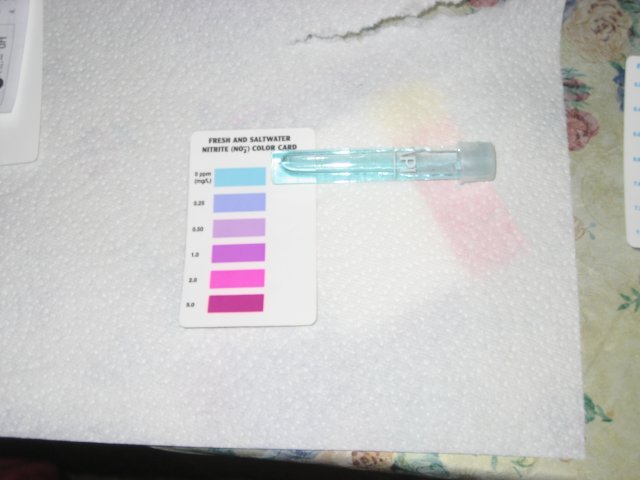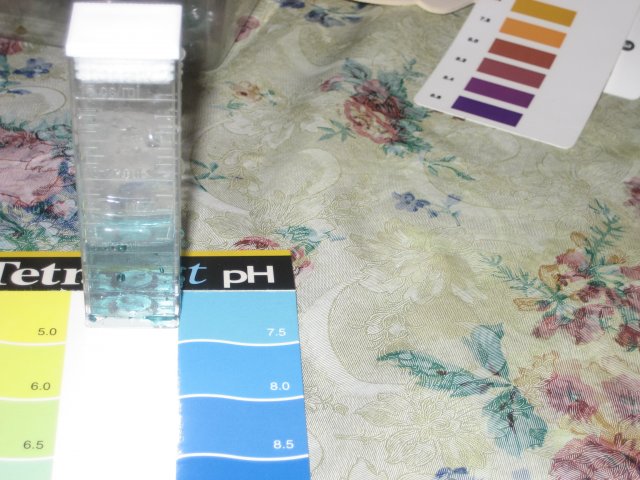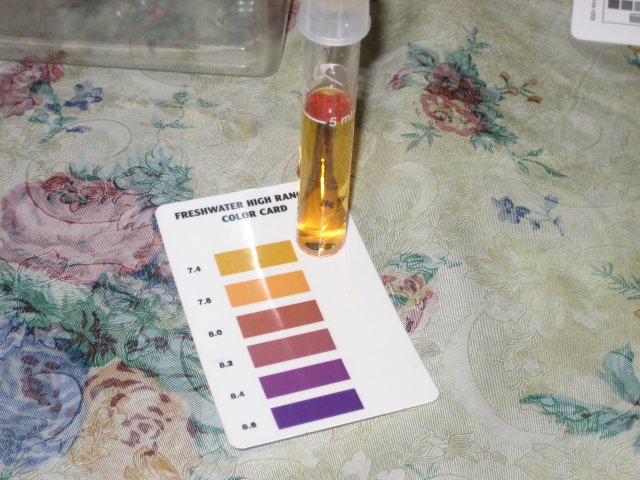The Box
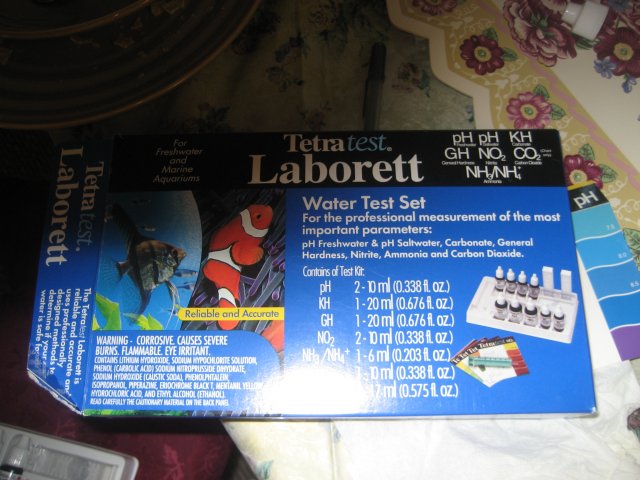
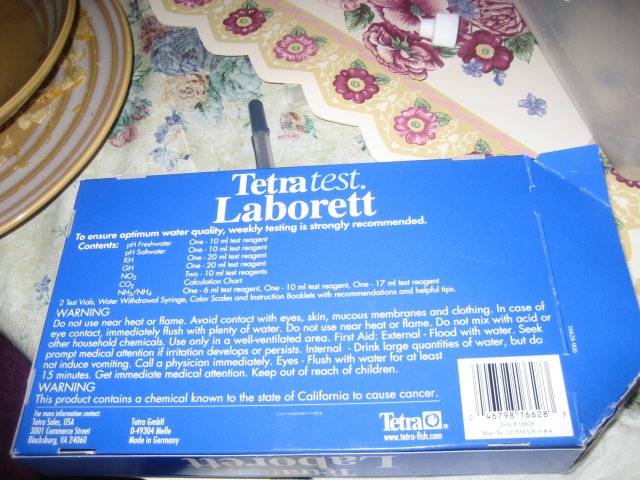
The Testing Bottles/Packaging:
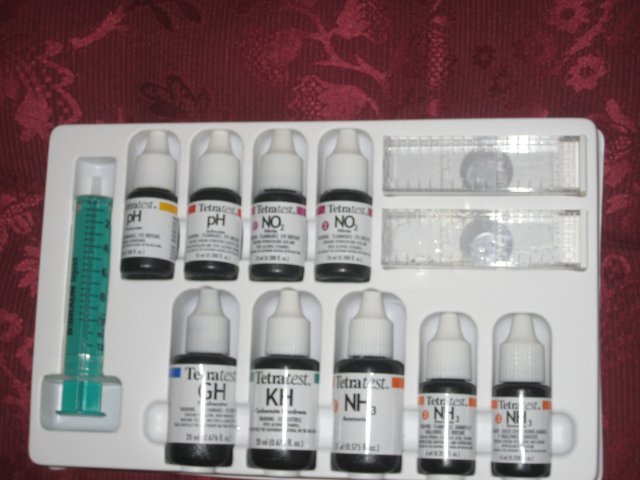
A neat tray. Notice the handy syringe which I will also be using for ferts/ It is much less frustrating than manually filling the tubes, and also starts my drip acclimater.
There are no nitrate or high range PH testers, but there are KH, GH, and a saltwater PH tester.
The square plastic vials are not nearly as easy to break as glass vials and are easier to fill manually, thanks to corners.
The largest bottles in this kit are 20mL, whereas the API bottles are all 37 mL. You also have to use just as much reagent, if not more, to test. So this kit will go faster than the API.
The Color Scales:

The PH tester tests from 5.0-10.0 with a gradient of .5, though it jumps from 5.0 to 6.0 and from 9.0 to 10.0. The API test kit tests from 6.0 to 8.8 with a .2 gradient, except where it jumps from 6.0 to 6.4 and 8.4 to 8.8.
Tetratest:
5.0, 6.0, 6.5, 7.0.....8.5, 9.0, 10.0
API Master:
6.0, 6.4, 6.6, 6.8......8.2, 8.4, 8.8
The API is more precise, but the Tetratest has a wider range.
The nitrite tester starts at 0.3 mg/l, with a gradient of .5 mg/l. The bottom of the color chart indicates "3.3-33 mg/l". The API master starts detecting nitrate at .25 ppm and goes to 5.0 ppm.(.25, .5, 1.0, 2.0, 5.0). Both can be used in freshwater or saltwater.
Tetratest:
<0.3 mg/l, 0.3, .8........3.3-33
API Master:
0 ppm, .25, .5, 1.0, 2.0, 5.0
Both test kits do kooky things. The API is more precise, but keep in mind that the larger ends of the scales are not used very much.
Ammonia:
Tetratest:
0 mg/l, .25 mg/l, 1.5 mg/l, 3.0 mg/l, 5.0 mg/l
API Master:
0ppm, .25 ppm, .5ppm, 1.0 ppm, 2.0ppm, 4.0 ppm, 8.0 ppm
The API has a larger range. Both sort of go kooky at the larger range, though again, knowing the precise amount of ammonia at the higher end of the scale is generally not very useful.
The Instructions:

These are easy to follow. However, for some tests, you have to use 3 bottles, and the wait for the ammonia is 20 minutes!
Next up: Side-by-side testing with the API master.







The Testing Bottles/Packaging:

A neat tray. Notice the handy syringe which I will also be using for ferts/ It is much less frustrating than manually filling the tubes, and also starts my drip acclimater.
There are no nitrate or high range PH testers, but there are KH, GH, and a saltwater PH tester.
The square plastic vials are not nearly as easy to break as glass vials and are easier to fill manually, thanks to corners.
The largest bottles in this kit are 20mL, whereas the API bottles are all 37 mL. You also have to use just as much reagent, if not more, to test. So this kit will go faster than the API.
The Color Scales:

The PH tester tests from 5.0-10.0 with a gradient of .5, though it jumps from 5.0 to 6.0 and from 9.0 to 10.0. The API test kit tests from 6.0 to 8.8 with a .2 gradient, except where it jumps from 6.0 to 6.4 and 8.4 to 8.8.
Tetratest:
5.0, 6.0, 6.5, 7.0.....8.5, 9.0, 10.0
API Master:
6.0, 6.4, 6.6, 6.8......8.2, 8.4, 8.8
The API is more precise, but the Tetratest has a wider range.
The nitrite tester starts at 0.3 mg/l, with a gradient of .5 mg/l. The bottom of the color chart indicates "3.3-33 mg/l". The API master starts detecting nitrate at .25 ppm and goes to 5.0 ppm.(.25, .5, 1.0, 2.0, 5.0). Both can be used in freshwater or saltwater.
Tetratest:
<0.3 mg/l, 0.3, .8........3.3-33
API Master:
0 ppm, .25, .5, 1.0, 2.0, 5.0
Both test kits do kooky things. The API is more precise, but keep in mind that the larger ends of the scales are not used very much.
Ammonia:
Tetratest:
0 mg/l, .25 mg/l, 1.5 mg/l, 3.0 mg/l, 5.0 mg/l
API Master:
0ppm, .25 ppm, .5ppm, 1.0 ppm, 2.0ppm, 4.0 ppm, 8.0 ppm
The API has a larger range. Both sort of go kooky at the larger range, though again, knowing the precise amount of ammonia at the higher end of the scale is generally not very useful.
The Instructions:

These are easy to follow. However, for some tests, you have to use 3 bottles, and the wait for the ammonia is 20 minutes!
Next up: Side-by-side testing with the API master.





Last edited:





